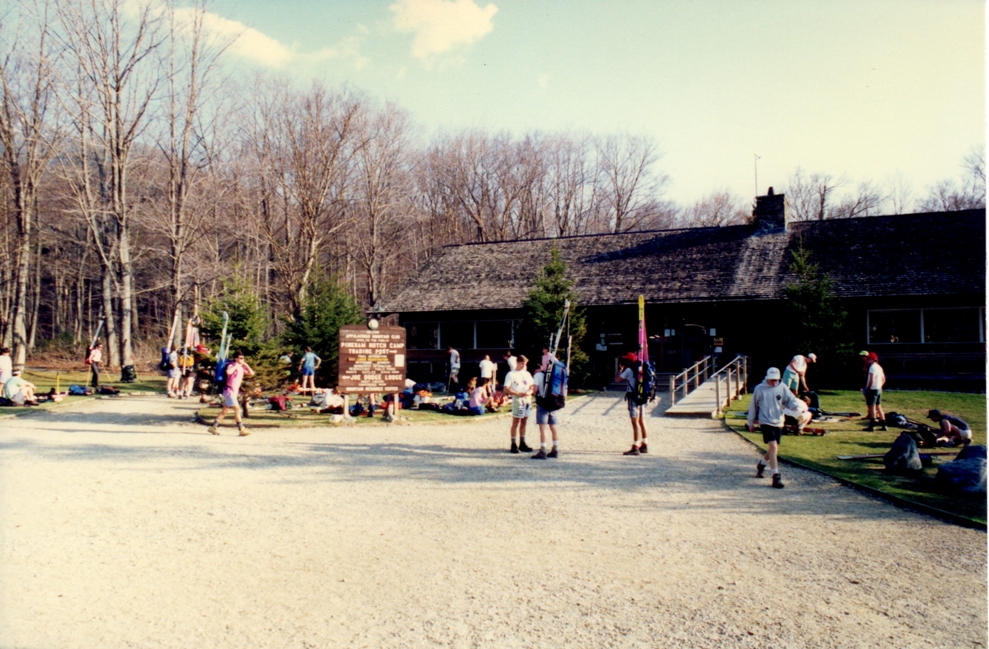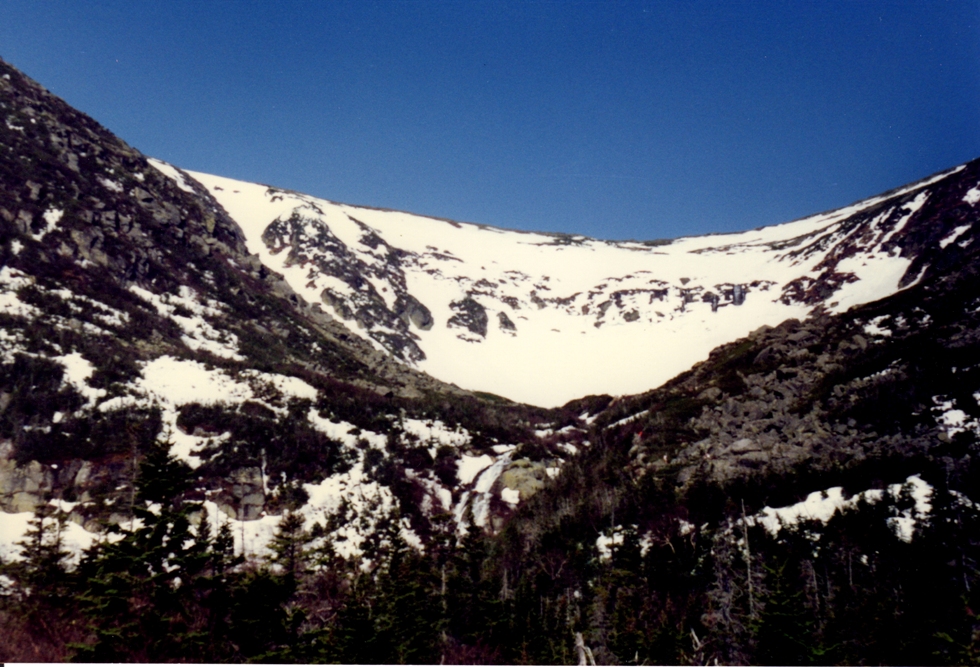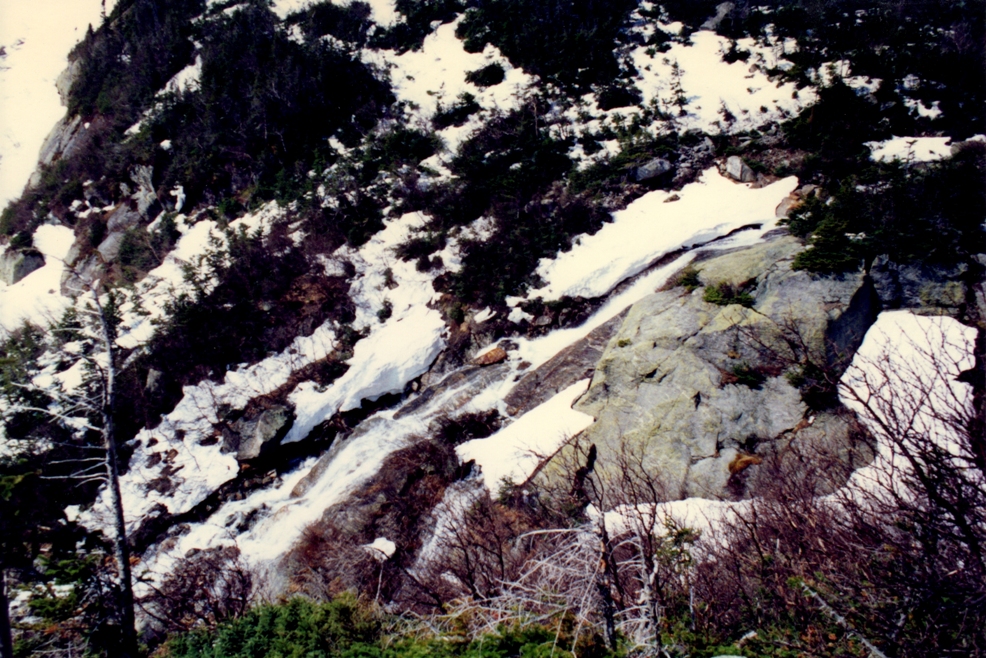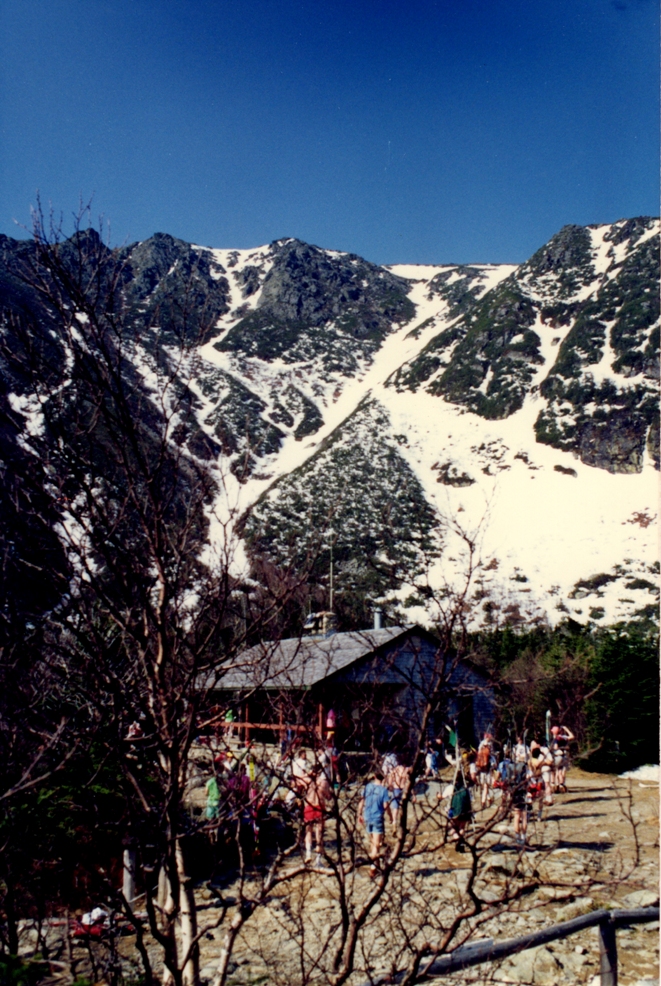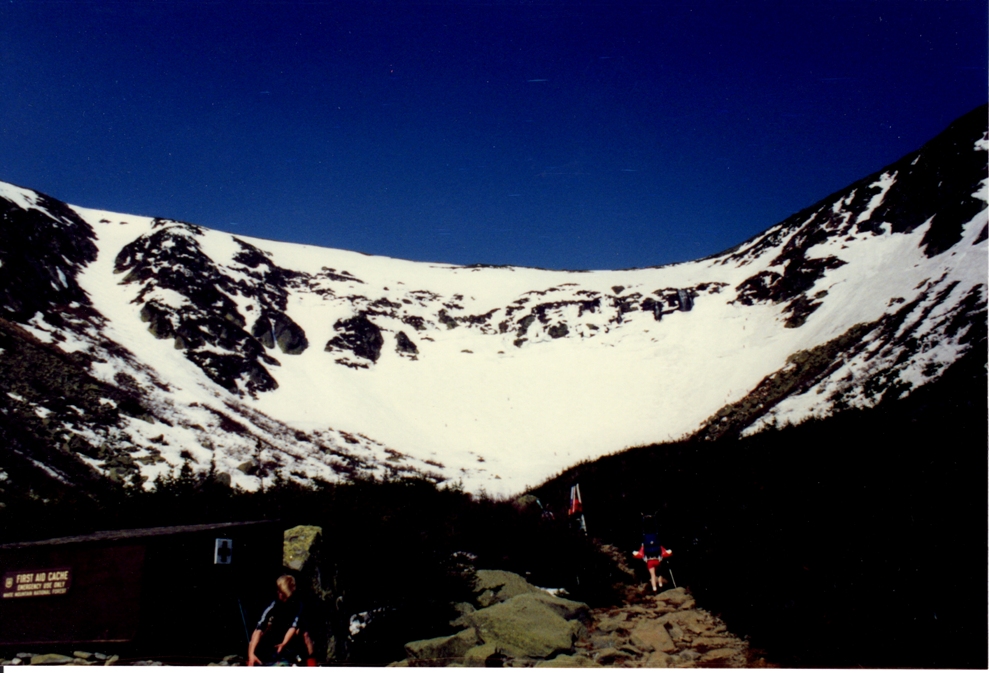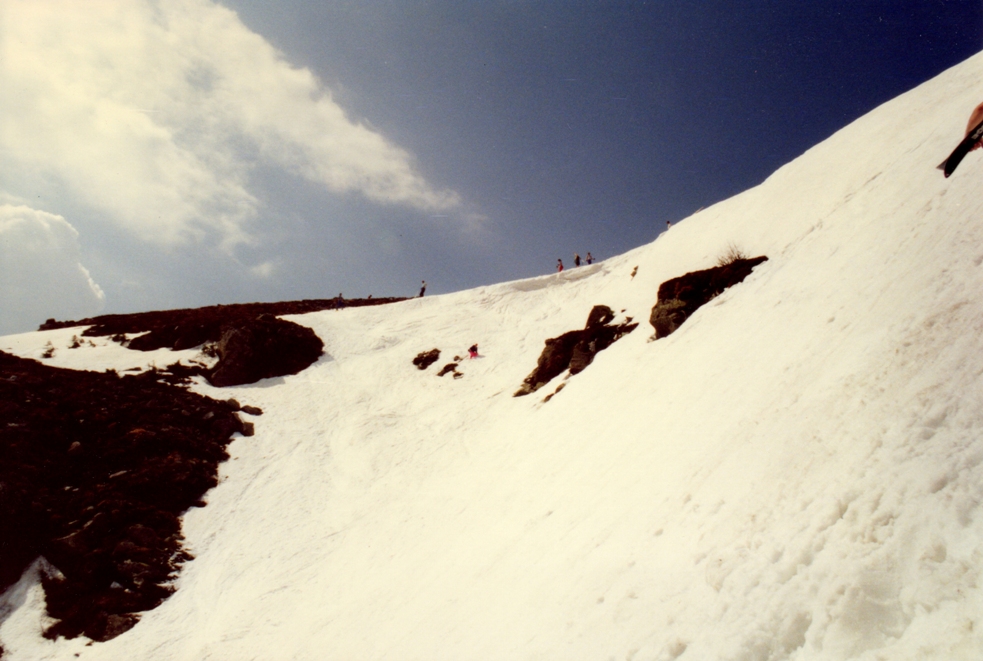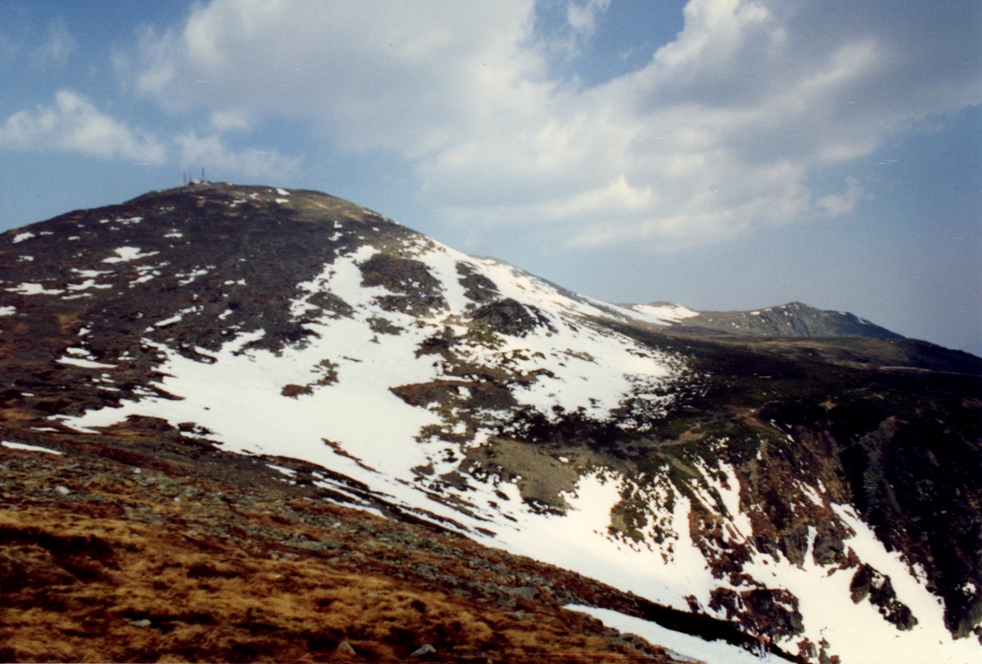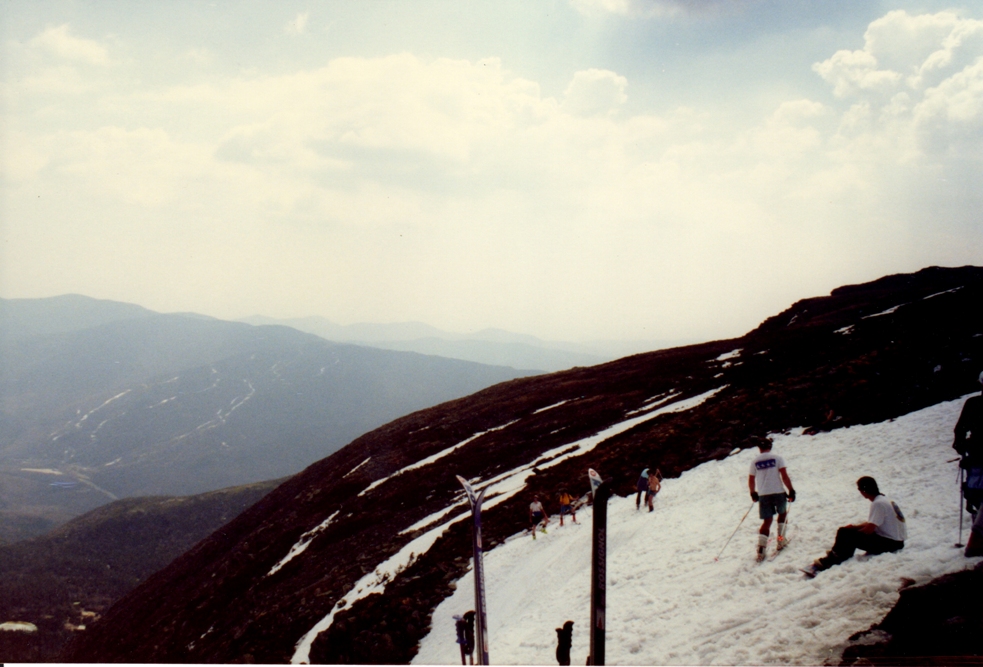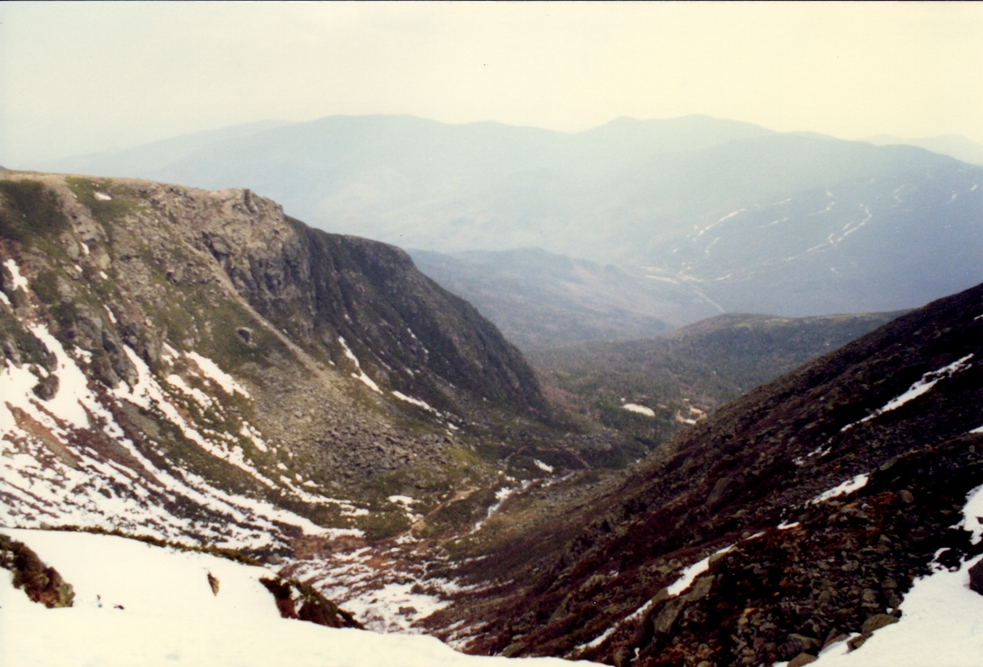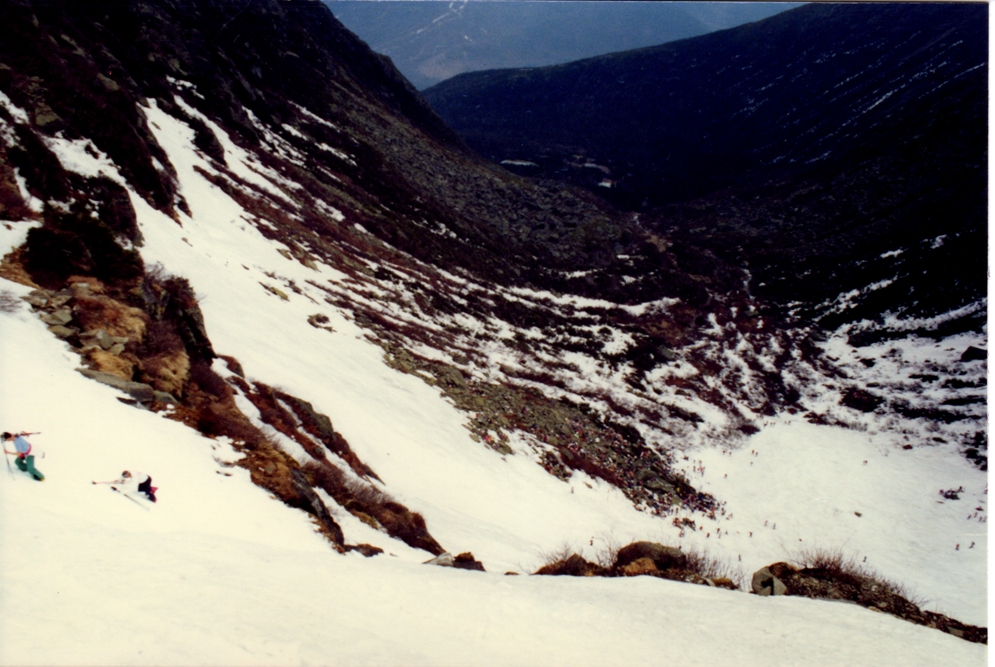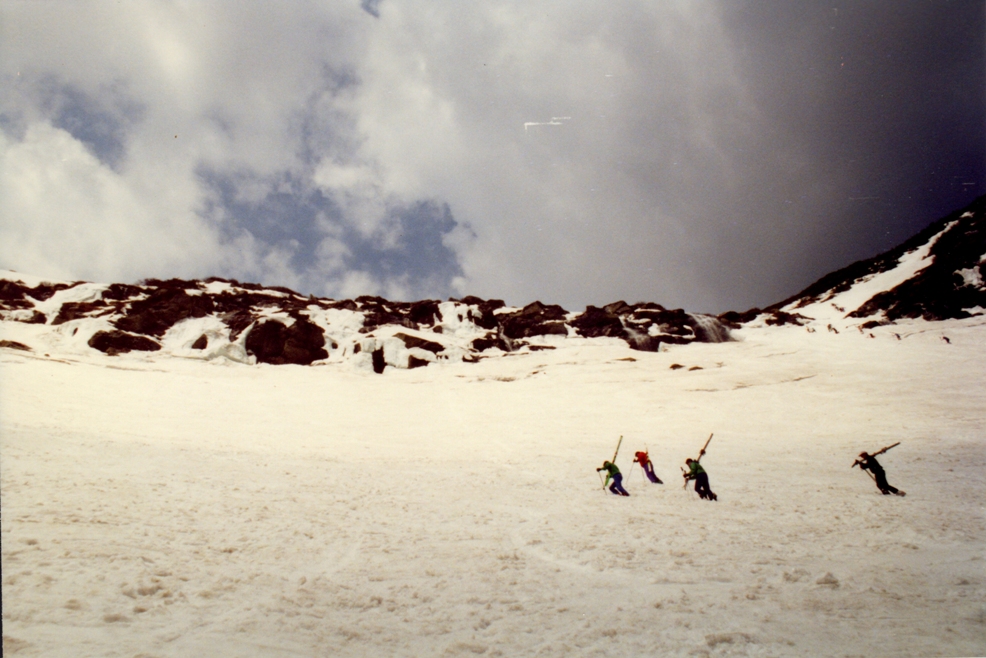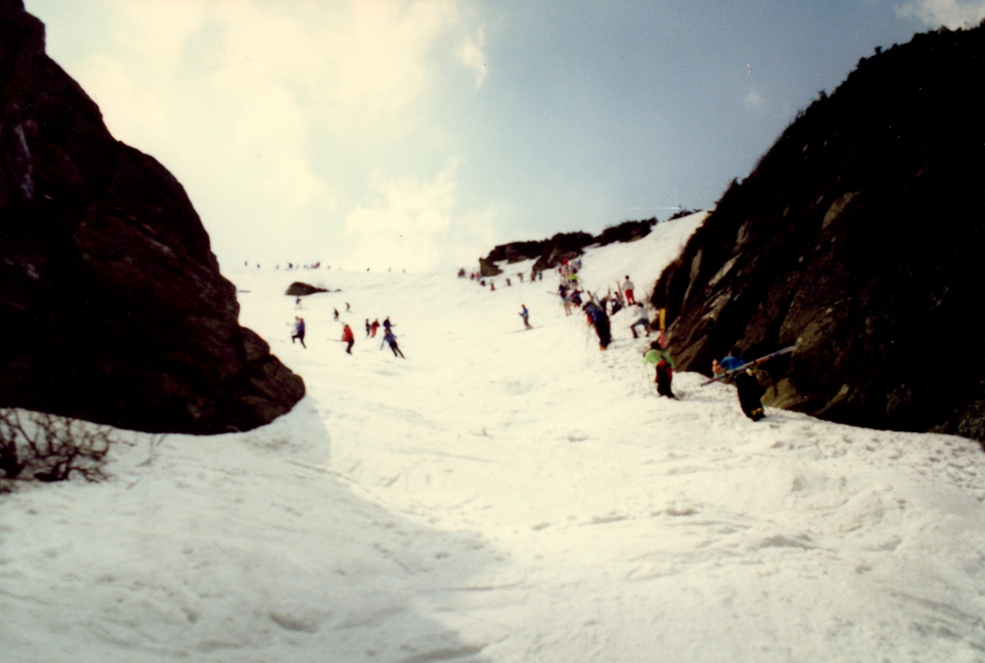 by Tony Crocker » Nov. 15, 2018
by Tony Crocker » Nov. 15, 2018
Reconstructing a "ancient history" report was quite straightforward in this case. Spring in Tuckerman Ravine is a bucket list
item in North American skiing, but an unusual one for a West Coast resident. So when I was scheduled for a Society of Actuaries
meeting in Hartford, CT in early May I seized a rare opportunity. I also brought a camera and put lots of pictures in a captioned
photo album, easy to locate many years later.
I flew east to Hartford on April 27, where it was 91F when I landed. I drove a rental car to Gorham, NH and spent the night
there. I parked at the Appalachian Club in Pinkham Notch just after 7:30AM.
It's another warm day, reaching 80F in Pinkham Notch and 55F at my high point on top of Left Gully.
I recall a hook to weigh backpacks and that mine weighed 38 pounds with ski boots inside and skis strapped to the sides
in A-frame mode. I noticed that many hikers had stripped down aluminum frames, ski attachments on the sides and boots often
clicked into the ski bindings to minimize weight for a day hike. I started up at 7:45AM with much of the Sherburne Trail
alongside this stream.

After an hour or so I had my first view of Tuckerman Ravine.
More melting snow along the trail.
Here I pass by the "Howard Johnson's" mid-mountain shelter.
Hillman's Highway is in view above.
Not far below Lunch Rocks I get a clear view of the ski options.
The Headwall has been severed, with its steepest midsection melted out into waterfalls. I climbed up Left Gully at far left, booted
up and left my pack there. I then traversed above the Headwall and descended through the short slot at far right. I then traversed
to looker's left, climbed up and skied Chute at center left before ascending Left Gully again to retrieve my pack.
Here I'm almost to the top of Left Gully about 10:45AM.
The 3 hour hike ascended 3,500 vertical feet in 4 miles. Climbing is much faster when you top out at 5,500 vs. twice that on San
Gorgonio. Many of the locals were climbing faster than I was. My San Gorgonio hikes (longer but same vertical) from 1980-1983
usually took me about 7 hours.
View of Mt. Washington from the top of Left Gully:
View SE toward the top of Hillman's Highway:
In retrospect I should have skied my final run there, though I'm not sure how difficult the walk is from the top of Left Gully.
Here I'm traversing north above the Headwall.
View east down the ravine to Pinkham Notch:
Wildcat Ski area is visible through haze actross the road.
View of Lunch Rocks from far skier's left of the Headwall.
The descent toward Lunch Rocks (Right Gully?) was very mushy in the warm weather and partial south exposure.
Skiers climbing up the bowls:
More skiers climbing below the waterfalls and crevasses in the Headwall:
View from the top of Chute:
I'm now on my second ascent of Left Gully.
View down while skiing Left Gully:
This was the end of the film roll so there was a double exposure. But it's worth showing how many people were climbing/skiing
Left Gully on a fair weather spring Saturday, enough to make it a mogul run. Left Gully is far beyond what's lift accessible
in the Northeast. The upper half is sustained in the 40 degree range, comparable to Wipe Out/Drop Out at Mammoth or Snowbird's
Upper Cirque. The snow in Chute and Left Gully was sheltered and supportable for excellent spring skiing.
I finished skiing at 2PM and hiking down to Pinkham Notch by 4:15. On the way down I saw an ABC News crew filming and
interviewing skiers. The next Wednesday I was watching the evening news and saw the clip. There were an estimated 2,000 people
in Tuckerman Ravine that day, a scene surely unique in backcountry skiing. I then drove to my great aunt's home in Northfield,
Vermont, where I had a long soak in her 19th century clawfoot bathtub before dinner. I estimate that I had climbed about 5,000
vertical feet and skied three runs totalling 2,500 vertical.
On Sunday morning I drove to Killington, where 3 separated sectors were open. There was some early morning fog but temperatures
were still in the 50's. The snow was old wet granular beaten up by the hot weather. The best skiing was in DEEP moguls, 4 runs on
Superstar and 3 on Upper Downdraft. Later I drove around to the Bear Peak chair, where Wildfire was the only continuous run open.
A few die hards were walking across bare sections of Outer Limits to ski the remaining snow there. The open intermediate runs, Skye
Lark, Lower Downdraft and Wildfire, had snow like glue. It was best to stay on the steeper runs and get soem help from gravity. The
conditions at Killington explained perfectly to me why so many easterners are attracted the quality of Tuckerman's snow and
terrain in late spring. I skied 12,700 vertical feet at Killington.
The best skiing of this trip was still ahead of me. After the actuarial conference I flew to Portland, Oregon. On Wednesday I
skied a couple of hours in drizzle at Mt. Hood, then watched windsurfers in the Columbia Gorge before driving to Bend. Thursday
and Friday May 3-4 delivered some of the finest corn snow I have ever skied on Mt. Bachelor. Some pictures of the 1990 trip are at the end of this report from 2000.

